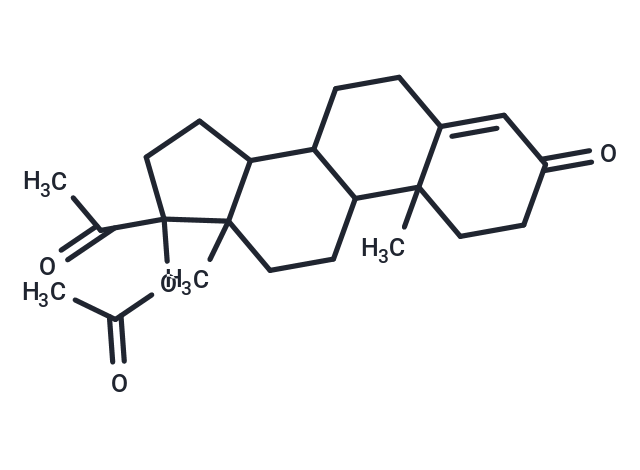Shopping Cart
Remove All Your shopping cart is currently empty
Your shopping cart is currently empty
17α-Hydroxyprogesterone acetate is a compound with progestational activity and exhibits anti-inflammatory effects at the murine maternal-fetal interface.

| Pack Size | Price | USA Warehouse | Global Warehouse | Quantity |
|---|---|---|---|---|
| 10 mg | $30 | In Stock | In Stock | |
| 25 mg | $48 | In Stock | In Stock | |
| 50 mg | $68 | In Stock | In Stock | |
| 100 mg | $103 | In Stock | In Stock | |
| 500 mg | $232 | In Stock | In Stock |
| Description | 17α-Hydroxyprogesterone acetate is a compound with progestational activity and exhibits anti-inflammatory effects at the murine maternal-fetal interface. |
| In vitro | 17α-Hydroxyprogesterone (Delalutin) is non-androgenic and does not affect the development of nonreproductive organs, unlike progesterone and certain other sex steroids [1]. |
| Molecular Weight | 372.50 |
| Formula | C23H32O4 |
| Cas No. | 302-23-8 |
| Smiles | CC(=O)OC1(CCC2C3CCC4=CC(=O)CCC4(C)C3CCC12C)C(C)=O |
| Relative Density. | 1.14 g/cm3 |
| Storage | Powder: -20°C for 3 years | In solvent: -80°C for 1 year | Shipping with blue ice/Shipping at ambient temperature. | ||||||||||||||||||||
| Solubility Information | DMSO: 4 mg/mL (10.74 mM), Sonication is recommended. | ||||||||||||||||||||
Solution Preparation Table | |||||||||||||||||||||
DMSO
| |||||||||||||||||||||
| Size | Quantity | Unit Price | Amount | Operation |
|---|

Copyright © 2015-2026 TargetMol Chemicals Inc. All Rights Reserved.